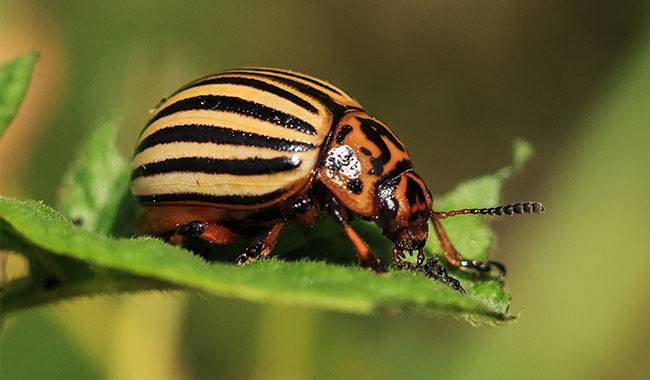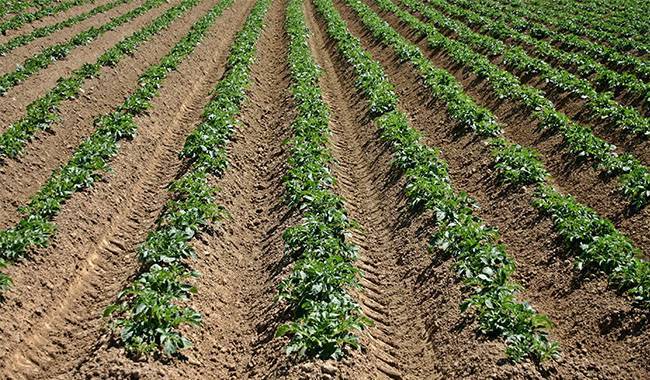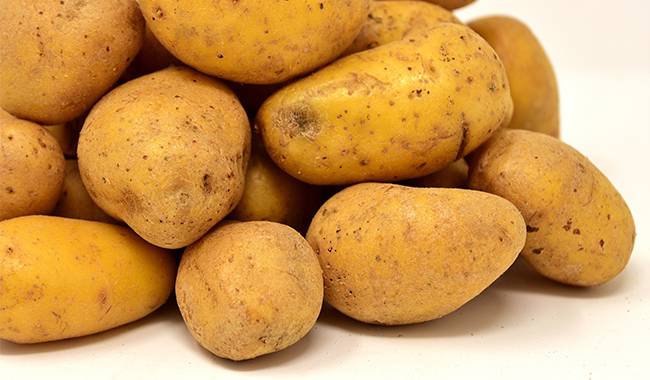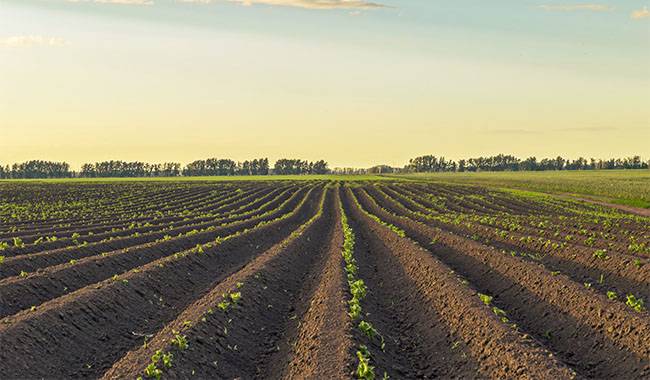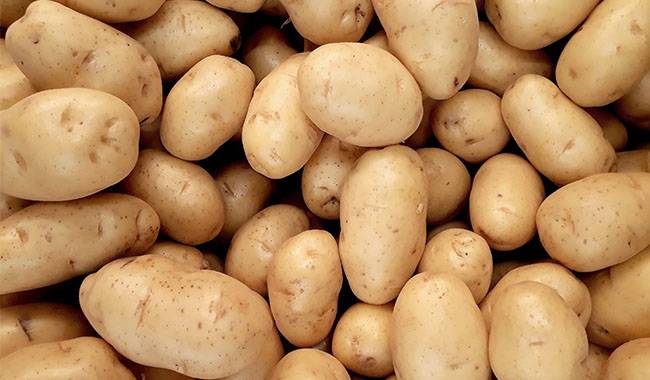
We keep hearing that only the “right” potatoes are properly stored. So what is the best way to store potatoes in the winter?
But even if you grow varieties suitable for long-term storage and carefully sort your tubers before putting them in the basement, you won’t succeed if you don’t follow the basic rules for storing tuber crops.
In order to not only save your potato harvest until March but also to keep the necessary quantities (until a new harvest), you need to know the 5 main rules for storing potatoes.
PREPARE THE STORAGE AREA CAREFULLY
Not everyone can boast of having a special potato storage space.
However, wherever potatoes are stored (in the basement, in the cellar, on a balcony in a holding box, in a pit with boards at the bottom, in a pantry), they must be prepared in advance.
A general list of tasks for preparing storage space for root crops and potatoes themselves is shown below.
Thorough cleaning of surfaces and storage tanks from dust and debris, painting and spraying, if necessary.
Disinfect walls, containers, shelves, and racks with a disinfectant. If, earlier in the year, there are signs of rot and mold in the cellar or basement boxes, supplement disinfection with special preparations or fumigation.
Thorough ventilation of the potato storage area after processing.
Checking the operation of the ventilation system.
Further drying of the potatoes themselves – stirring in fresh air for 3-4 hours immediately before placing.
Ensure the ability to store potatoes separately for sowing and eating, and to divide each “category” into multiple varieties.
Procure additional packaging, insulation, or pouring materials for potatoes.
Prepare moisture-absorbing materials and cloth bags with dried herbs or plant-fungicidal leaves to prevent rot and the spread of disease.
sacks containing mountain ash, mugwort, ferns, and miscellaneous materials can simply be placed between layers of potatoes or side by side.
Observe all the rules for placing potatoes: no sharp changes in temperature, a transition period after drying, and a gradual decrease in the temperature of the storage area until optimal performance is achieved.
OPTIMAL TEMPERATURE
Potatoes must be stored in a frost-free room. Potatoes below 0 are unacceptable.
And the more stable the temperature, the closer it is to the ideal temperature of about 2°C-3°C (35.6°F-37.4°F), the better the storability of the harvest.
Sudden temperature changes can affect potatoes even worse than a stable situation, but at higher temperatures. Any match should be mitigated by additional cover or ventilation.
The most dangerous times for temperature increases are at the beginning and end of the potato storage period.
Problems cannot be avoided if vegetable storage is isolated prematurely and cellars, basements, and boxes are tightly closed before a sustained frost arrives outside and optimum temperatures are reached inside.
If the temperature in potato storage rises above 5°C (41°F), the risk of accelerated sprouting and rotting increases, and the storage period is shortened to several months.
For some varieties, especially boiled varieties, a very strict temperature indicator is recommended.
However, if the temperature in the potato storage area is kept in the range of 1°C-5°C (33.8°F-41°F), this will be sufficient for the safety of any variety.
To control the temperature, thermometers must be installed so that timely action can be taken, preferably in several places and at different heights.
AIR ENTRANCE
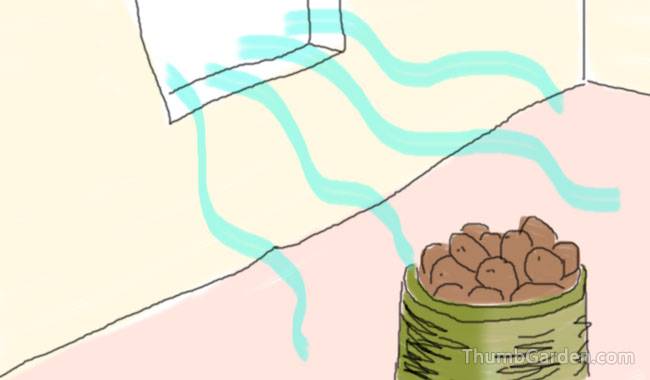
Air circulation, proper ventilation of the house, and air access to the lower part of the potato are some of the most important conditions for successful potato preservation.
Potatoes must “breathe” in containers or boxes with multiple, evenly distributed ventilation holes to allow air to flow freely.
There must be sufficient distance between shelves or drawers, at least 20 cm (7.87inch) from walls and floors, and for this purpose, drawers can be mounted on stands.
Potatoes can only be covered with additional insulation if “breathing” materials (such as burlap or other breathable fabrics) are used. But that’s not all.
The room where the potatoes will be stored must be well ventilated. Vents, air vents, and ventilation systems must be considered in the early stages of construction.
Ventilation should be carried out regularly to control the temperature and to avoid excessive moisture accumulation inside. Humidity is the dangerous enemy of stored potatoes compared to high temperatures.
Special hygrometers are well suited to maintain proper storage patterns at 85 to 90% humidity, and fluctuations of up to 70-95% may occur.
It is this moisture that keeps the tubers from crumpling and retaining their flavor profile without being covered in condensation.
Regular ventilation is usually sufficient to control humidity. If humidity levels are too high, install additional ventilation, boxes, or containers containing coal, salt, and other moisture-absorbing ingredients.
In rooms with extremely high humidity, potatoes are often stored with beets, which are covered with several layers of root vegetables on top.
KEEP OUT OF THE LIGHT
Potatoes should be stored in a completely dark place. Regardless of how and where the potatoes are stored, they need light insulation.
If the room where the potatoes are stored is brightly lit (e.g., balcony, garage, or lanai), the potatoes need to be additionally covered with a special shield or opaque material.
When doing so, make sure that air circulation is not affected. Even a simple cover made of coarse linen can prevent potatoes from sprouting and spoiling in time.
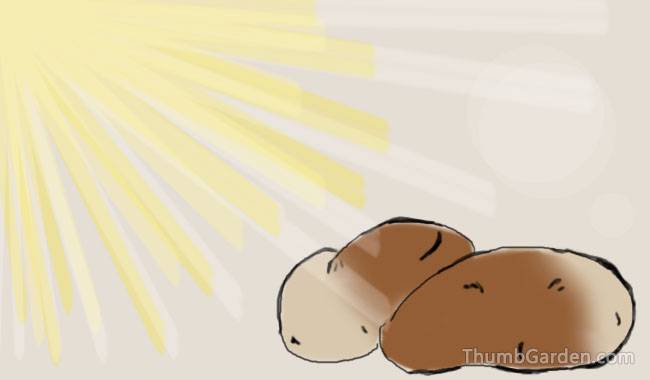
CONTINUOUS CONTROL
It is no coincidence that potatoes need to be so carefully selected before storage: by sorting, you can exclude even a damaged potato from entering, and the potatoes will quickly start to spoil.
Only keep potatoes that are intact and can be stored for a long time.
Weekly or better, weekly crop inspections and monitoring of potato storage conditions will make it possible to correct the situation in time and take additional protective measures.
A timely selection of potatoes that are damaged or starting to rot will preclude substantial losses.
For any rot, even slight, it is important to remove and select not only the damaged but also the nearby roots.
When inspecting potatoes, it is necessary to ensure that temperature, humidity, and light protection measures are optimal. Controlling the room temperature with potatoes should be regular.
The presence of foreign smells and bugs indicates that the tubers need to be checked more carefully.
YOU SHOULD ALWAYS KNOW
Containers of spoiled potatoes and tuber crops, which need to be consumed as soon as possible.
Pre-prepared materials for additional insulation – non-woven fabric, straw, coarse linen, old blankets, etc.
If the risk of hypothermia is minimal, it is better to cover the potatoes with a breathable but insulated material.




